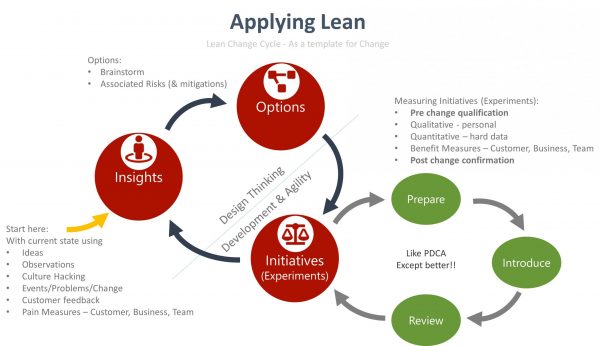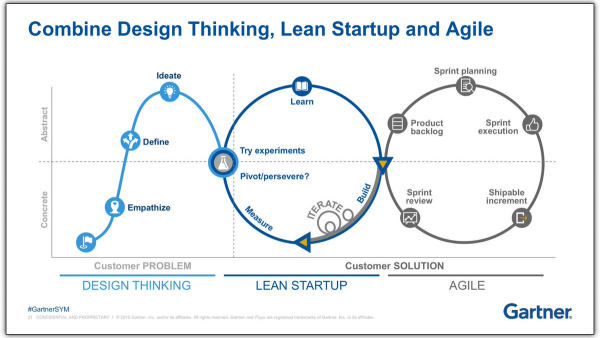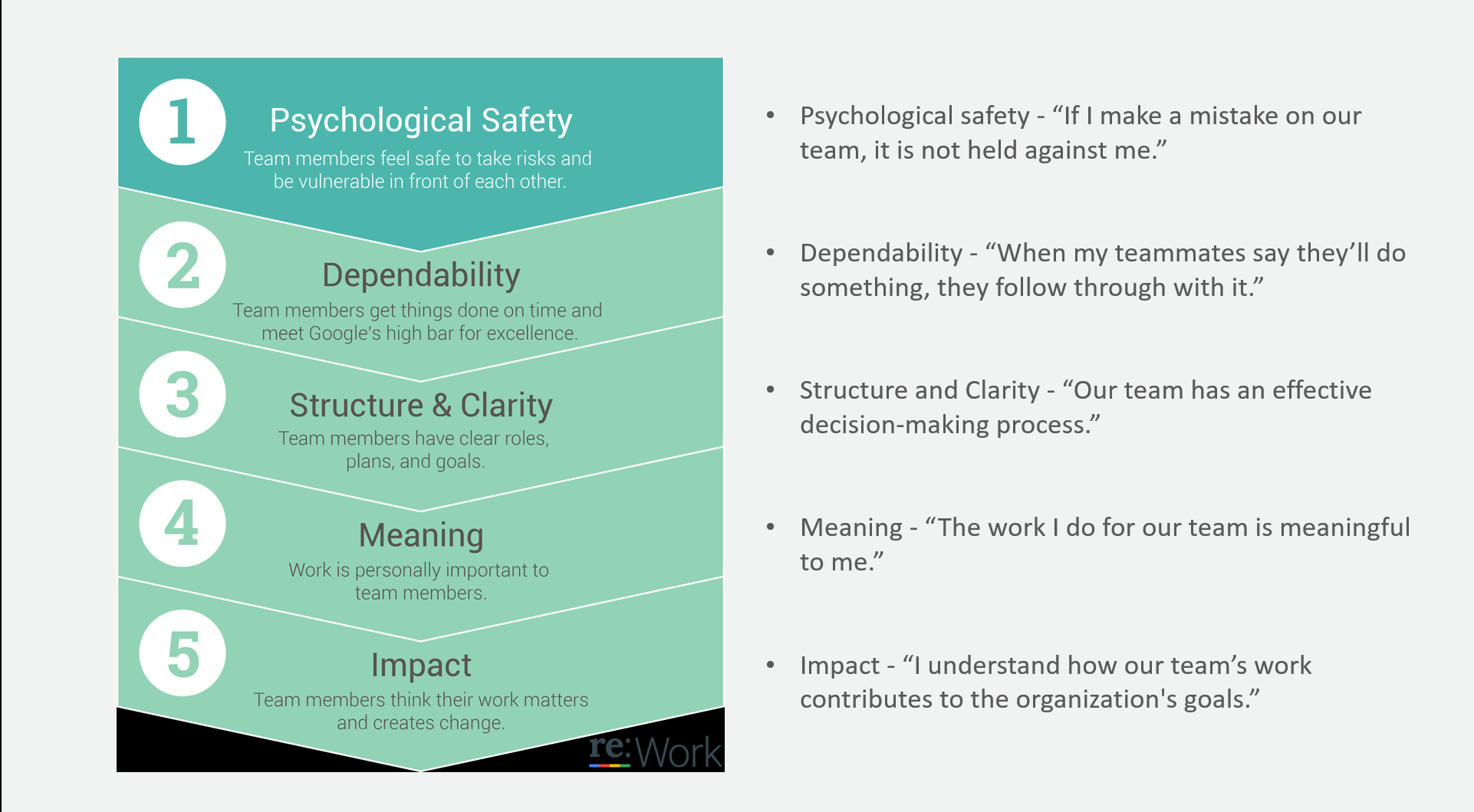playing soccer, table-tennis, golf, tramping, running, cycling, card tricks (is that a sport?), and taking my kids to their sporting events…
Download PDF CV’s
Choose from ATS | Flash | Consulting



Applying Lean
Applying Lean to a business isn’t just simply starting to use Kanban boards, scrum ceremonies, or doing Kaizen and value chain analysis… its about the people, customer, and service (in that order!)…
Applying Lean Startup: A Practical Guide Using the Lean Change Cycle
In the ever-evolving landscape of business and innovation, applying Lean Startup principles is a proven approach to minimizing waste, reducing risk, and delivering real value. One of the most effective ways to implement these principles is through the Lean Change Cycle—a continuous, feedback-driven model that blends insights, experimentation, and iterative improvements.
Let’s explore how to apply Lean Startup using this cycle as a framework for change.
Step 1: Start with Insights
Every Lean Startup journey begins by understanding the current state of your business, product, or customer environment. Insights are derived from various sources:
- Ideas and hunches from your team
- Observations of user behavior and trends
- Culture Hacking to uncover root causes of resistance or inertia
- Customer feedback via interviews, surveys, or support tickets
- Pain points and metrics (customer, team, business)
These insights serve as the raw material for generating change. They are your hypotheses about what could or should be different.
Step 2: Generate Options
Once you have meaningful insights, it’s time to create Options—possible ways to address what you’ve discovered. This is where creativity meets strategic thinking. During this phase:
- Brainstorm potential solutions to the problems identified
- Discuss associated risks and how you might mitigate them
- Prioritize options based on feasibility, impact, and alignment with business goals
Options are not commitments—they are possible experiments you can run.
Step 3: Run Initiatives (Experiments)
This is the heart of the Lean Startup approach: validated learning through experimentation. Choose your top-priority options and convert them into small, measurable Initiatives:
- Build Minimum Viable Products (MVPs)
- Launch small-scale tests
- Involve real users early
Measure your experiments using:
- Pre-change qualifications
- Qualitative feedback (personal experiences)
- Quantitative data (usage metrics, sales, engagement)
- Benefit measures (customer satisfaction, team morale, business value)
- Post-change confirmation to ensure desired outcomes were achieved
Step 4: Cycle Through Agile Change
Lean Startup thrives on iteration. The Lean Change Cycle includes a second loop (on the right side of the image) that mirrors PDCA (Plan-Do-Check-Act) but adapted for agility:
- Prepare – Get ready to implement validated experiments
- Introduce – Roll out changes in a controlled, transparent manner
- Review – Gather feedback, analyze impact, and reflect
- Pivot or Persevere – Decide whether to adapt your approach or scale it
This iterative loop ensures that change is not only continuous but also aligned with evolving business and customer needs.
Bridging Design Thinking and Agile
At the core of this model is the fusion of Design Thinking, Agile Development, and Continuous Learning. This hybrid approach ensures that you:
- Empathize with users
- Prototype and test ideas rapidly
- Learn what works before investing heavily
It encourages experimentation over prediction, aligning perfectly with the Lean Startup mindset.
Final Thoughts
Applying Lean Startup is not just about building fast—it’s about building smart. By using the Lean Change Cycle, you can:
- Reduce the risk of failed initiatives
- Foster a culture of learning and adaptability
- Create products and services your customers actually want
Whether you’re launching a startup, transforming a legacy business, or innovating within a team, this cycle provides a clear, actionable framework for turning ideas into impactful results.
Applying Lean to Continuous Improvement
Understanding the need to combine Design Thinking, Lean Start-up and Agile to form the most powerful way to understand and deliver value to a customer
On my first day as the CI Manager at an IT Services company I attended a two hour meeting with several Engineers, a few Sales and Service Delivery Managers, and a few Help Desk/Support people… during that 2 hours it increasingly became more obvious why they had created the CI Role that I was bought in to fulfill.
Needing to find a starting point I sat down afterwards and digested what I had witnessed. What I was seeing was an organisation that was making poor decisions that were ultimately costing the company rather than improving it. Maybe that sounds a little harsh – but it isn’t at all far fetched to say that any positive change was more luck than judgement.
What I observed was that there were 3 classic traits of disfunction going on
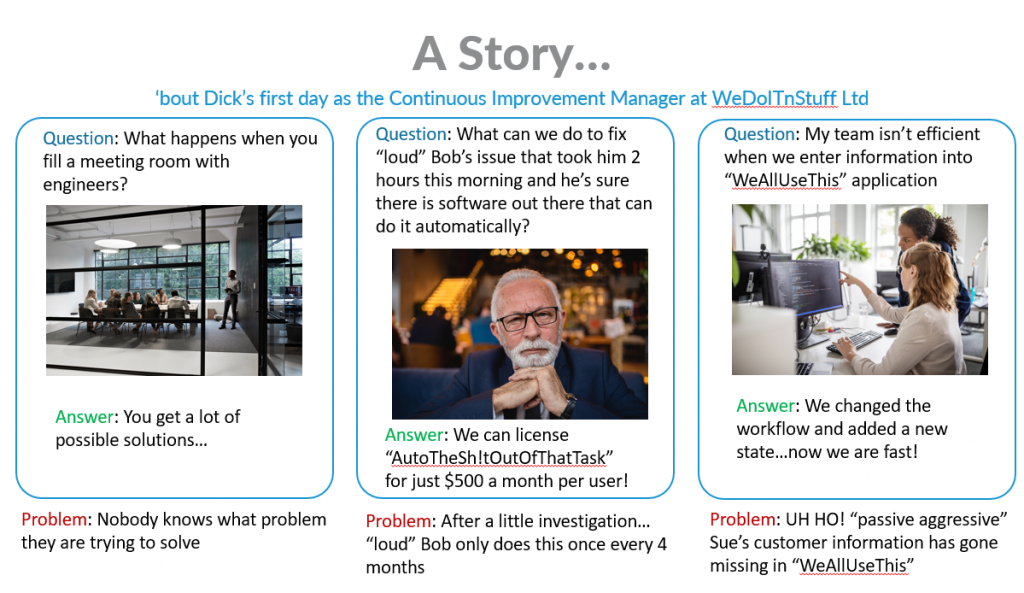
So where do these traits come from? This Gartner model I think shows quite nicely how we flow from the human/abstract/ or problem space through to concrete work and output or solution space.
If we look at where good Insights typically come from it’s the design thinking or Problem space.
Agile companies do most of their work or initiatives within tribes/squads. An Initiative being a package of work that delivers a solution. Well it turns out that the traits occur because we are moving straight into the Initiatives from the Insight generation without doing the due diligence. Sometimes we may not even be having an insight!
So how should we be thinking about continuously improving? and I’m hoping you’ll be able to see how this applies to everything we do – and how this lite-weight minimal approach can help guide us to making more effective and constructive decisions.
We do this by starting with the Insight – which can come from several sources.

Examples could be a P1 event, Help Desk noticing they get 200 support requests for the same issue, Provisioning have a frustration or idea.
The first thing we can do is try to assess the PAIN of the insight in terms of the Customer, the Business, and the Team. It is useful to articulate this in words but also assign it a number 1 – 5 using a guide which I’ll show later.
Next we need to do the crucial task of defining the real Problem – Don’t let those engineers off the chain yet!
We also need to ask if we need to collect data to ensure it’s real – Don’t take the muzzle off Bob (or Pete) yet!
Brainstorming with the right people we can now let those engineers loose but make sure for every option we assess it’s risks and determine if we need to do more – create a POC, have a wider meeting, gather more metrics etc.
Now we’ve done some due diligence we can assess whether we abandon, pivot, or create an initiative
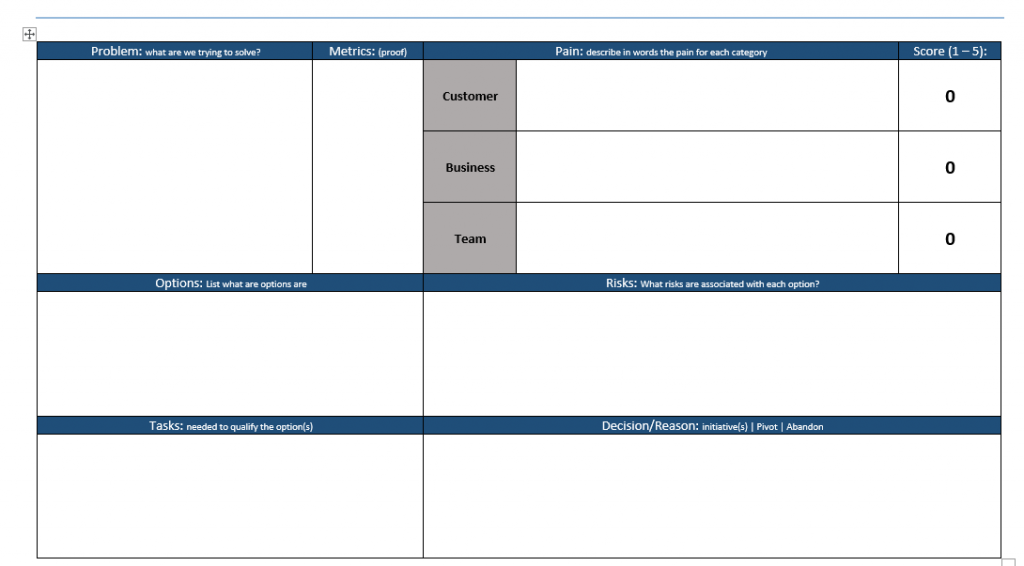
So here’s a Lean Canvas I have created to help guide people through a constructive thought process. The first question is where we can use a plethora of tools/methods to arrive at an articulated problem. There are alternative rating systems that can be used, but this is a good starting point.
Once a pragmatic decision has been made to create an Initiative for any given Insight, we can look at it’s priority using a similar scoring but this time for the Benefit that will be experienced by the Customer, Business and Team. I should say the hypothesised solution as we should think in terms of experiment/learn/build/measure. The Benefit should sometimes match the Pain score, although this isn’t always the case (e.g. a customer centric solution may cause extra work for a Team).
The solution should be assessed for scope to determine the impact, complexity and constraints.

Now the Initiative can begin, either internally to one team (operational), multiple teams collaborating (tactical) or for the more complex or organisational wide projects – through a signed off, budgeted and fully planned assault (strategic)
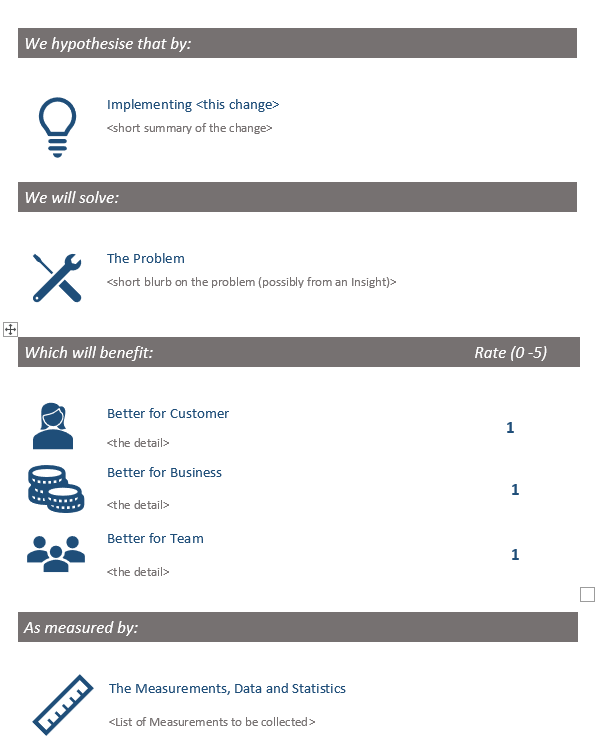
Here’s another Lean Canvas for the Hypothesis – What we are saying here is that we hypothesis that by implementing this solution we will solve this problem, and we can confirm through measuring these things. And here is a guide to estimating the Pain and Benefit numbers whether $ or non-$.
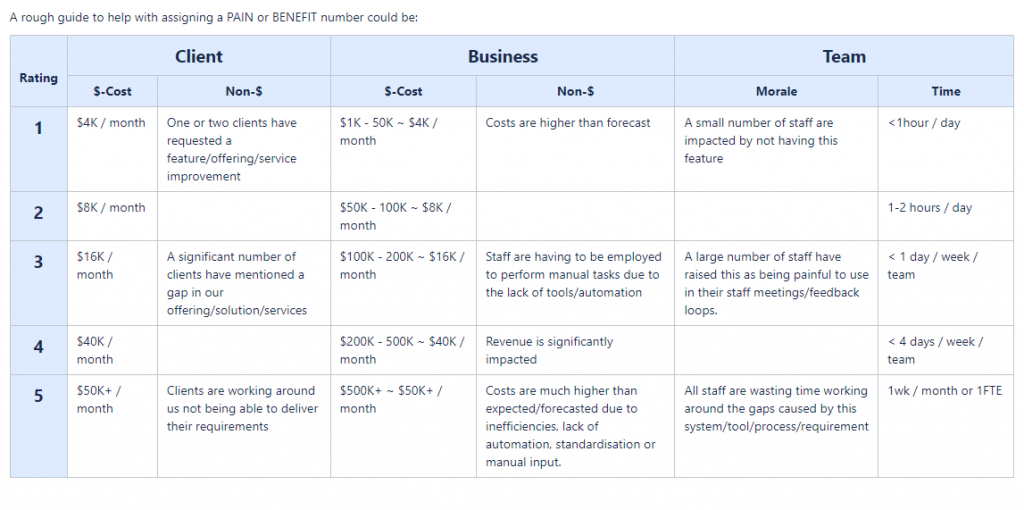
To summerise, a universal lite-weight framework can ensure: Consistency of approach, visibility for shared learning, a way to meaningfully prioritise, prove the issue is real, and prove the work added value.
Everyone is responsible for CI, and as a final thought to move us forward and mature our take on CI:
if you see something that is ‘broken’ or ‘an opportunity’ champion it through the framework. CI is revolution!
High Performing Teams – Using Google’s Project Aristotle:
Google’s Project Aristotle:
The researchers also discovered which variables were not significantly connected with team effectiveness at Google:
- Colocation of teammates (sitting together in the same office)
- Consensus-driven decision making
- Extroversion of team members
- Individual performance of team members
- Workload size
- Seniority
- Team size
- Tenure
The researchers also found that what really mattered was less about who is on the team, and more about how the team worked together.
I have used this framework as a guide ever since it was first published. Before I came across it, I had something that was very similar, just not so well articulated and simplified. This one is much easier to use.
The most effective way to use it is to be completely transparent with your team. I typically describe this in the first 1-on-1 catch-ups as well as in reinforcing in wider departmental team meetings (e.g. Town Halls).
Host: “You work in a very successful team, tell me what it’s like?”
Guest: “Well, you know, it’s fantastic; we are all able to innovate and take risks which sometimes leads to brilliant outcomes, and nobody gets blamed if something doesn’t work, although we do share and learn from those mistakes. Everyone works hard and has each others backs, we all know exactly what we are supposed to be doing, and what success looks like. I think we all are doing what we want to be, and not only do we celebrate the wins internally, but our customers seem to like what we give them as it is really addressing some real needs they have.”
Psychological Safety
What do we want?
Teams and individuals to have the belief that they are safe from being seen as ignorant, incompetent, negative or disruptive, and can take risks and experiment
How can we create an environment where they do?

Keeping it real
“This is your safe space”… is something to reiterate during meetings particularly if people aren’t responding or appear to be keeping quiet
Dependability
What do we want?
Trust! Everyone feels they can rely on their team members
How can we create an environment where they do?
- Clarify roles and responsibilities of team members
- Hold each other accountable and always look at ways to help people improve
- Coach individuals that might have suffered in the past and remind the team about the psychological safety
- Learn about “Conscientiousness” as it’s the leading predicter of success
Keeping it real
“Simon” had been a part of an unfortunate incident that had left him insular and lacking confidence, and the team were often teasing him for it – vicious cycle. Coaching the team and Simon helps build confidence and change the perceptions held.
Structure & Clarity
What do we want?
Everyone understands their job expectations and the process for meeting these expectations, as well as how their performance contributes to the effectiveness of the team.
How can we create an environment where they do?
- Regularly communicate team goals
- Use OKR’s that are aligned with the Company Strategy
- Demonstrate how roles fit within the team and the organisation (Organisational Development Framework)
- Ensure products/services/outputs are prioritized and fit within the company strategy
Keeping it real
OKRs at a glance:
- Objectives are ambitious and may feel somewhat uncomfortable
- Key results are measurable and should be easy to grade with a number (Google uses a scale of 0 – 1.0)
- OKRs are public so that everyone in the organization can see what others are working on
- The “sweet spot” for an OKR grade is 60% – 70%; if someone consistently fully attains their objectives, their OKRs aren’t ambitious enough and they need to think bigger
- Low grades should be viewed as data to help refine the next OKRs
- OKRs are not synonymous with employee evaluations
- OKRs are not a shared to-do list
In practice, using OKRs is different from other goal-setting techniques because of the aim to set very ambitious goals. When used this way, OKRs can enable teams to focus on the big bets and accomplish more than the team thought was possible, even if they don’t fully attain the stated goal. OKRs can help teams and individuals get outside of their comfort zones, prioritize work, and learn from both success and failure.
Meaning
What do we want?
Everyone feels that the work they do has meaning to themselves and the company. Motivation and enthusiasm TRUMP skills and experience
How can we create an environment where they do?
•Remember everyone will have slightly differing meanings and it is a personal attribute •Be a model of enthusiasm and motivation – be engaging! •CONSTANTLY feedback the wins, no matter how small (Kudo’s spot prizes, etc.) •Don’t let any good bit of work go unrecognized
- Remember everyone will have slightly differing meanings and it is a personal attribute
- Be a model of enthusiasm and motivation – be engaging!
- CONSTANTLY feedback the wins, no matter how small (Kudo’s spot prizes, etc.)
- Don’t let any good bit of work go unrecognized
Keeping it real
- Understand your people – e.g. SCARF model
- Status, Continuity, Autonomy, Relatedness, Fairness – the brains graphic equalizer! 1980’s steroes…
For example: Status – reduce yours to raise someone else’s
Impact
What do we want?
Everyone should feel the result of their effort is making a difference to the team and the company. Trust! Everyone feels they can rely on their team members
How can we create an environment where they do?
•Reflect on the work the team is doing and how it impacts users, clients and the business •Regularly show how the team’s output is positively affecting the company and the customers •Customer journey maps can provide the team with real insight into what they feel and how the team’s work can have large positive outcomes
- Reflect on the work the team is doing and how it impacts users, clients and the business
- Regularly show how the team’s output is positively affecting the company and the customers
- Customer journey maps can provide the team with real insight into what they feel and how the team’s work can have large positive outcomes
Keeping it real
Use Customer Journey Mapping. Engineers often think they know what is important. Journey maps with customers often show that things you don’t think are important are to the customer – so changing their focus to align with customer is very powerful
MEng
Master of Electronic Engineering
University of Hull, 2000
DipEng
| Postgraduate Diploma in Environmental and Ecological Electronic Engineering University of Hull, 1994 |
BEng (Hons)
| Bachelor of Electronic Engineering University of Hull, 1994 |


